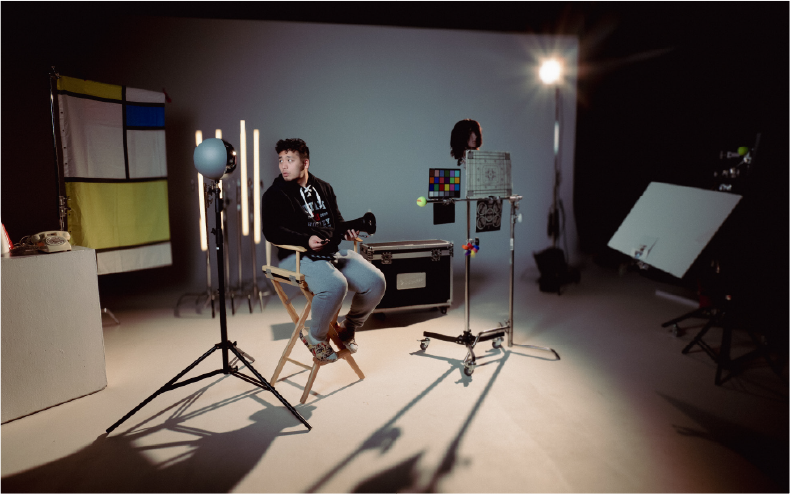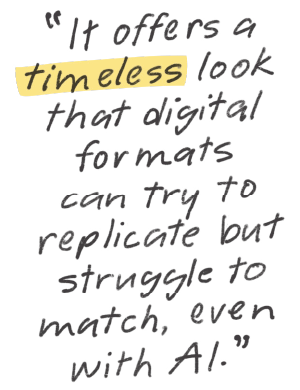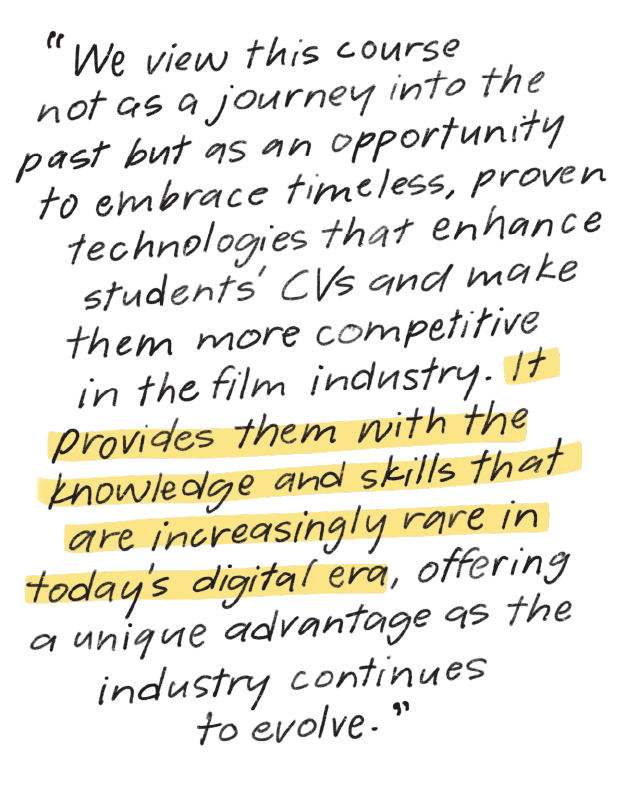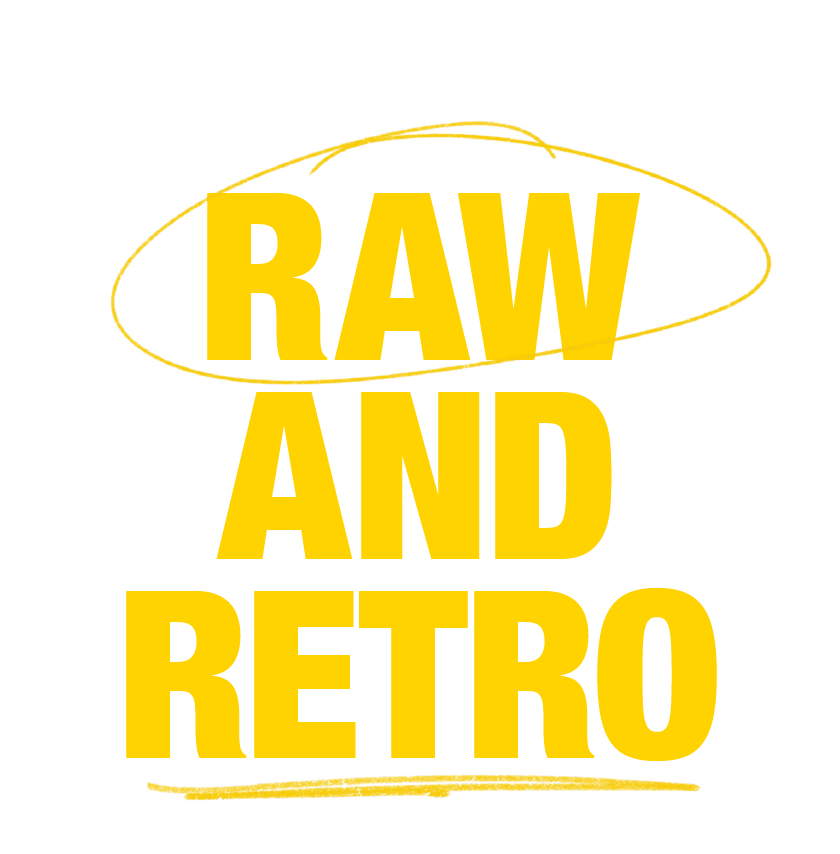WRITTEN BY MERRITT MECHAM

In 2025, if you were to walk into a trendy store like Urban Outfitters, you may not expect to find old-school film cameras on display or see Kodak t-shirts hanging nearby. Now that many people have high-quality digital cameras readily available on their phones, turning back to the days of physical film (with its drawbacks) might dumbfound some.

Taolue Zhong during a moving portrait session in the 35mm filmmaking class
Photo: ALSO Sisters

But at the U’s Department of Film & Media Arts, revisiting traditional filmmaking is a vital part of creating bright futures for students.
This year, the Department of Film & Media Arts launched a 35mm Filmmaking class, taught by Assistant Professors Miriam & Sonia Albert-Sobrino (the twin sister filmmaking duo known as the ALSO Sisters). In this class, students set aside their digital cameras to learn the intricacies of shooting and handling 35mm film.
35mm film was originally created by Kodak and was long considered the standard for filmmaking; even now with digital filmmaking, the size and resolution of feature-film images still reflects that of 35mm film.
The larger cultural trend of nostalgia and vintage — see Kodak t-shirts and 35mm Urban Outfitters cameras — has somewhat seeped into the film industry, though opposing forces (such as AI) remain strong. “Nonetheless, prominent directors such as Greta Gerwig, Christopher Nolan, and Quentin Tarantino continue to advocate for photochemical filmmaking, helping to keep the medium relevant,” said Miriam Albert-Sobrino. “And not just preserved but thriving. Recent projects like Robert Eggers’ 'Nosferatu,' shot on Kodak 35mm, and 'The Brutalist,' filmed on VistaVision… exemplify the industry’s commitment to tangible, handcrafted techniques.”
There are a variety of reasons that filmmakers would choose 35mm film over digital. The top reason, many would say, is aesthetic superiority. “35mm film has a rich, organic image quality with a natural grain and texture,” said Sonia Albert-Sobrino. “It has great highlight retention and dynamic range, which helps capturing subtle details in both the highlights and shadows. It offers a timeless look that digital formats can try to replicate but struggle to match, even with AI.”
Last year’s film “Twisters,” directed by alumnus Lee Isaac Chung (MFA ‘04), was shot on 35mm film, a decision supported by executive producer Steven Spielberg. And while analog film can pose certain risks, the film's Director of Photography, Dan Mindel said in an article published on Kodak Motion Picture's blog that 35mm often gave them distinct advantages when working in variable weather (“Digital cameras can’t really take mixed light very well, especially when skin tones are involved. Film gives you a lot more freedom over your lighting and aesthetic choices,” he said) to integrating special effects (“The forgiving softness of film really helps blend them into the final image to deliver an engaging experience for the audience.”)
In a way, celluloid filmmaking is to digital filmmaking as oil painting is to digital art. Both techniques can create beautiful art, but it makes sense that someone would prefer the texture and detail of a physical medium.
However, also similarly, physical mediums do have drawbacks. Film stock, like canvas and paints, can be expensive, and often require more time to create as well as necessitate specialized training. And, Sonia says, “the environmental impact of 35mm film is, unfortunately, higher than that of digital, due to the chemical processing involved and the disposal of film, both of which contribute to waste and water consumption.”
In many ways, these drawbacks were central in forming the class. “The course places special focus on careful planning and efficiency in shooting to minimize waste and reduce costs,” said Miriam. “By being more thoughtful about the number of takes and encouraging pre-visualization, students learn to be economical.” Before shooting on film, students perform test shoots using digital cameras, which also gives them the chance to compare the mediums and better understand their differences.
35mm filmmaking students at work
Photos: ALSO Sisters

Additionally, many of the class activities deal not with shooting new film, but with simply handling it. “We immerse students in hands-on camera-less techniques, where they manipulate and reuse 35mm prints to create their own titles or films by drawing or animating directly on the film strips,” said Sonia. “This approach not only provides them with an additional skill and career path to explore but is also sustainable practice.”
Students can also gain additional experience by taking the 16mm Filmmaking class. Though 16mm film isn’t as widely used in feature films as 35mm, it is commonly used for television and has a rich history of use in independent and experimental filmmaking. And, due to the smaller frame size, it’s a more affordable option. For a student interested in cinematography, “Standard 16mm and 35mm are just the beginning,” said Professor Kevin Hanson, Interim Chair of the Department of Film & Media Arts. “A really good cinematographer should be aware of all the film formats and the popular digital formats as well.”
There are also modern advancements that make using analog film more digital-friendly, said Miriam. “While the ubiquity and affordability of digital filmmaking led to a more judicious use of 35mm, it also helped make many processes associated with analog filmmaking more affordable — think editing, color grading, telecine (transferring film into another format), scanning, and image projection — ultimately creating a hybrid workflow that allows filmmakers to take more creative risks.”
And it’s not just the workflow. Learning 35mm enhances students’ proficiency with the artistic medium of film, and to think more like artists. Working with 35mm film, Sonia says, “fosters a heightened sense of creativity and experimentation that informs their digital work. In today’s industry, where lens-based processes are evolving and embracing generative artmaking, understanding how 35mm film looks and behaves visually enables students to create digital work (whether lens-based or generative) that feels more cinematic and registers as authentic to the audience.”
Digital cinematography is still the standard, and that likely won’t change — but for students, especially those interested in careers as cinematographers, experience with 35mm will have distinct advantages. “Have you ever loaded a 35mm motion picture camera? or ‘Have you ever worked with 35mm motion picture gear?’ Being able to say yes to these questions is crucial for positioning them competitively in the job market after graduation,” said Miriam. “Education in this course places students in a privileged position.”
Which is why, in this case, looking to film’s analog history is one way in which the Department of Film & Media Arts is setting students up for successful futures. “Being able to claim 35mm experience is a great thing for a young filmmaker, especially if they look to cinematography as a profession,” said Hanson. “Professionals respect the medium and the variety of experience.”
“We view this course not as a journey into the past, but as an opportunity to embrace timeless, proven technologies that enhance students’ CVs and make them more competitive in the film industry,” said the Sobrinos. “It provides them with the knowledge and skills that are increasingly rare in today’s digital era, offering a unique advantage as the industry continues to evolve.”







